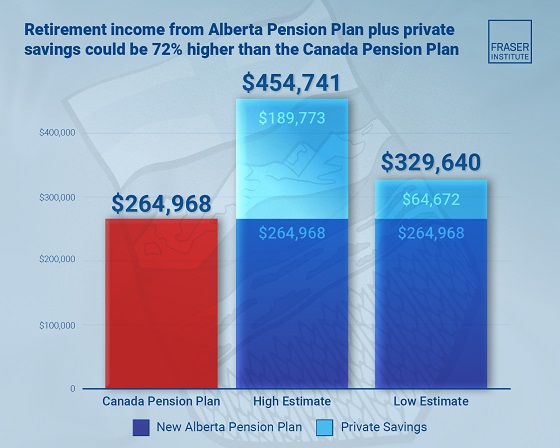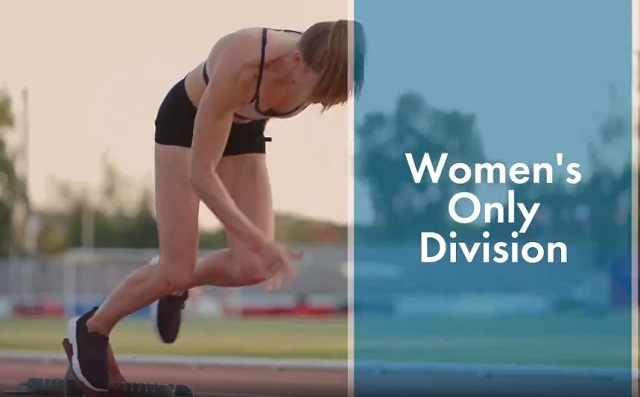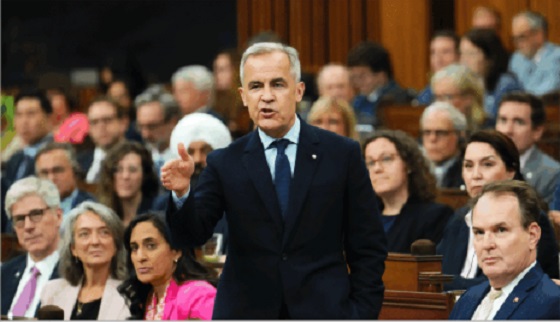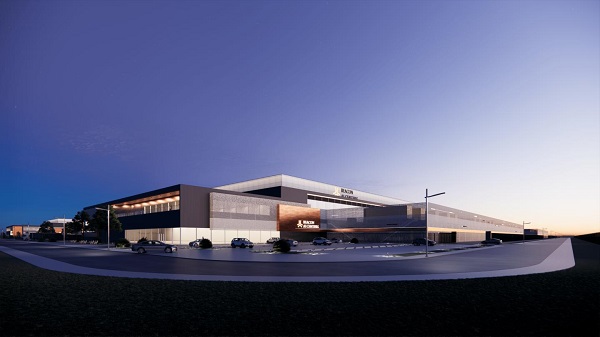Alberta
Demian Newman pens second open Letter to fellow Canadians

We give a lot of credit to Demian Newman in his ongoing attempts to bring reasonable discussion to the pipeline debate. In this most recent opinion piece, he links to a lot of different sources of information to support his argument. Take the time to read this article as well as the opposing POV written by Mike Sawyer, linked at the end of this story.
Read Demian’s first Open Letter by clicking this graphic: 
Here’s Demian’s second Open Letter:
Dear fellow Canadians,
In my original Open Letter, I had a very simple and basic premise; I do not believe shutting down Canada’s oil and gas industry will help the environment or climate change. In fact, I wholeheartedly believe it would have the adverse effect.
Over 200,000 people have read my opinion piece, and a lot have left very positive comments. But there have also been some opposing viewpoints. Which is good, because I wanted to start a conversation. With that in mind, I have summarized all the opposing comments below, with a response to each (minus the personal attacks…which I quickly dismissed).
Before we dive into all the comments concerned with my original letter, I would just like to summarize again; that Canada’s oil and gas industry putting up an OUT OF BUSINESS sign today, will not help Canada, or the planet, on any environmental level. Because, 1) you (and I), will not change our energy consumption. 2) that energy will simply be provided by another country, which does not have the same environmental regulations and standards to extract and sell their natural resources as Canada does.
If you’re protesting Canada’s industry because you’re fighting climate change, then I need to remind you that this is a worldwide issue, not a just a Canadian one. So, if that’s your intention, then you need to use your efforts to make worldwide change. Not just suffocate Canada’s industry.
If you’re already getting fired up that I’m not getting to the Q&A conversation, I promise I heard them all. But I don’t think a lot of people heard me before commenting on my first letter. And a lot of those voices were coming from a city that I absolutely love, but is obviously on a very different page regarding Canada’s oil and gas industry than me.
So, to my friends in Vancouver; I should’ve focused a bit more on the project which has been such a bone of contention for you – The Trans Mountain Pipeline Expansion. And I’m not going dive that deep into this, as again, the basis of this letter was a conversation with everyone from my first letter. But I would be remiss if I didn’t bring up that your former Mayor, Greg Robertson was vehemently opposed to a Canadian pipeline (the TMX), but last June signed a $150M pipeline deal to get the ever-expanding Vancouver airport jet fuel – from the state of Washington.
This is the part where I’m left scratching my head again, as Mr. Robertson fights against a Canadian pipeline, saying “it’s not worth the risk. In fact, it’s not in Canada’s interest”. How is a pipeline from the state of Washington, instead of Canada, in Canada’s best interest?
I’d dive into the hypocrisy of Mr. Robertson blasting Canada’s oil and gas industry, by saying that the TMX would put “people and the environment are at risk”, but a pipeline direct to the Vancouver airport from the state of Washington, is apparently no issue. However, I will refrain, as I like to travel. And though commercial airline travel certainly isn’t the best for the environment, I do believe that Canada’s airlines/airports are doing everything to be a world leader in reducing their environmental footprint – because I’d expect nothing less of a Canadian industry.
To use an analogy, I didn’t have a chance to in my first letter; I do believe Canadians protesting Canada’s oil and gas industry would be the equivalent of Canadians boycotting Westjet and Air Canada, but still going on the same holidays – just using international airlines instead. This idea is obviously ridiculous, as no one could believe this would help the environment on any level.
But then there are protesters all over the Trans Mountain Pipeline Expansion, but not one to be found fighting against the 4000 tankers bringing imported oil to Canada each year. Again, it’s head scratching.
I do think to understand why it’s happening, we need to have a cross-Canada conversation.
So, below are all the opposing opinions from my original letter (and I do apologize if I missed any, as I did try and summarize all of them). I’ve done this in a Q&A format, with the Opposing Comments (summarized) and then My Opinion. And it is only my opinion, and I’m sure someone else can give a much better reply, should they want to keep this conversation going…
Opposing Comments:
I received a lot of similar comments, that there’s no point in investing in a dying industry with no future.
My Opinion:
If you’re referring to no future based on worldwide oil reserves? The math on “Proven Reserves” is pretty straight forward, and everything you look up has it at 50ish years. This is based on today’s technology, and when you consider how far technology has come in the past 10–15yrs the opinions get pretty varied on how long the 50 years extends into. As this technology makes producing the “Probable Reserves” and “Possible Reserves” more likely by the day.
Without getting pulled down on this, I hope we can agree that fossil fuels aren’t running out any time soon – but aren’t a “forever solution”. So, we do need to find energy from multiple sources.
Opposing Comments:
It’s not a dying industry, it’s a dead industry. It’s the Model-T to the horse and buggy, Netlfix to Blockbuster video, or the Internet to traditional media.
My opinion:
I’m sorry, but if fossil fuel energy was a dead industry – then it’d be dead. But absolutely every economist is saying that fossil fuel consumption will continue to increase worldwide each year. I don’t have to copy a link for this, as you can find Google results by the hundreds for factual data. And it’s not hopeful data, but factual based estimates which provide information that every country, Fortune 500 company, bank, etc is listening too, while investing for the future.
At the bottom there is a link to an Energy Minute video, which does a great job explaining that the decrease in oil used by Canada between now and 2040 is more than offset by the increase use from developing nations. I’ve also again added Chris Slubicki’s video link (below) to this, as there’s a big portion of his presentation that explains this (and everything) much better than I ever could.
Opposing Comments:
A lot of people asked for proof that Canada is a world leader in oil and gas environmental standards.
My opinion:
The one thing I realized after my original letter, is that I’ve done a terrible job archiving everything I’ve read/watched/heard over the years, which drove the opinion for my first letter. So, if I could ask anyone for the stats on Canada versus the world on environmental standards in this industry, that’d be great. I know I’ve read hundreds of positive articles over the years (maybe more).
However, I have included the very public list of oil producing countries flaring gas in a link below (billions of cubic meters of gas which releases CO2 into the atmosphere). Canada ranks 22nd for the gas our industry emits (typically methane, ethane, butane, propane and hydrogen sulfide). I’m reading that as extremely positive, since we’re 7th in oil production over that time (2013-2017). Our 1.3 bcms pales in comparison to Russia (19.9) Iraq (17.8), Iran (17.7), or the USA (9.5). And don’t get me started on Nigeria who flared 7.6 bcms, which is more than 5 times the gas Canada flares, even though we produce almost twice as much oil.
I also included another link below of an interesting article this past month, where we have the least political corruption of any country involved in the oil and gas industry. Which is kind of funny, as I don’t think any Canadian would be surprised by that.
Opposing opinions:
Even though I didn’t mention the TMX pipeline in my original letter, I had numerous people say they were for Energy East and BC LNG, but dead-set against TMX – because of the certainty (as in absolute certainty) that there will be a tanker spill in the Vancouver harbor. And it could threaten the Orca population.
My opinion:
I agree. It might surprise people (but I really hope it doesn’t) that I also don’t want an oil tanker spill, nor do I want those tankers to endanger a single killer whale. And now that the feds bought TMX last summer (which is a whole other letter for another day), and EVERY CANADIAN is officially a pipeline company owner, I do think we should take these concerns seriously.
Current info will tell you that the TMX being built would increase tanker traffic off the coast of BC by 6.6.%. Certainly not a huge percentage. I also understand that any increase needs to be measured against its environmental impact.
The National Energy Board (NEB) just came out last Friday, that they want the creation of the marine mammal protection program in response to the TMX. So, it’s good to see the NEB doing its job as a 3rd party nonpartisan review board on international and inter-provincial aspects of the oil, gas industry – which certainly doesn’t need to be removed as per bill C-69 (again, another topic for another letter).
Also, for the spills, I did see the plans for the (I believe quadrupled) emergency response program for tanker issues, because of the 6.6% additional TMX tanker traffic. Which was followed up with how incredibly unlikely an event like this would be, as the tankers are handled with tug boats until they hit open water.
What is easily accessible on Google are the stats on tanker spills (below). Worldwide it’s been 2 large tanker spills (700+ tonnes) since 2010. I also believe that two is, two too many – which is why I believe the Canadian industry will add a ton of safeguards over and above worldwide standards (like they do with their pipelines).
Speaking of, there is still nowhere near the Canada wide education on pipelines and the Canadian environmental standards for safe construction and maintenance of them. As somehow a record of 99.9995% pipelines with zero issues in Canada isn’t good enough. Neither is the fact that Canadian pipelines rate of spills were 57 per cent lower than in Europe and 60 per cent lower than in the United States over the past decade.
I understand that it should be 100%. But honestly, what is?
Opposing opinions:
Many in BC are upset as they are viewed as a mere obstacle for Alberta to get their oil to market. When Alberta gains all the benefit financially.
My opinion:
Federal and provincial governments will see $46.7 billion in additional taxes and royalties from construction and 20 years of operation. At the point, where a CANADIAN OWNED pipeline is making Canada billions, why as a Canadian who wants green energy vs fossil fuels, wouldn’t you demand your current government use that money to research and develop this green/clean tech. Seems like a win-win…with some compromises. But every reasonable solution requires compromise.
Opposing Comments:
The romance of the electric car saving everything. And there are a lot of Canadians with this idea.
My opinion:
I can’t underscore my confusion on how the electric car has been so romanticized.
I completely understand the low emission side of the argument. But I’m shocked at how many people stop there, as if the electric car is “an environmental mic drop moment”, and don’t look any further. I think the video on the Energy Minute website does a fantastic job of both the pros and cons of the electric car (link below). But I also couldn’t help but include a link regarding on of the concerns on the batteries (also below).
Opposing opinion:
Not super surprising that I received lots of anti Oilsands “tarsands” “dirtyoil” comments, where Fort Mac got slammed pretty hard.
My opinion:
I included a few examples in my original letter about Oilsands GHG emissions dropping 29% since 2000 and a barrel of oil from there being a smaller carbon footprint than that of a barrel from California. But it fell on deaf ears.
So, this part of my letter isn’t for those you oppose the Oilsands, but instead is for those companies working in Canada’s Oilsands. It’s time to spend millions on a cross-Canada public relations campaign for this industry. And don’t tell Canadians how many jobs it creates. Cause I’ve heard from Canadians – and they don’t care.
Its time promote the thousands of real stories, where Canadian oil and gas projects cost so much more because of the extra time and effort needed to do them in the safest and most environmentally responsible way possible. Show Canadians what Fort Mac was before; unusable farmland with oil literally bubbling up through the ground. Show them what I’ve seen, that the reclamation efforts after the oil is extracted and the area is returned to a lush green forested area, where people would be shocked that oil and gas wells used to be there.
Perhaps we also need to get Canadians angry, and show them how they’ve been manipulated by groups like The Rockefeller group (article below) to demonize the Canadian Oilsands for their financial benefit.
Opposing Comments:
Who cares if protesters are paid? Doesn’t mean they don’t believe in their cause.
My Opinion:
I feel really bad that there are Canadians who’ve spent an enormous amount of time and effort at these protests and rallies, thinking they were trying to benefit the world. When they were actually helping line the pockets of billionaires. It makes me angry.
I hope they all look into it. And it makes them angry.
Protesting a Canadian pipeline based on saving the environment, probably wasn’t funded by environment loving humanitarians. But instead funded by a corporation with this in their Corporate Guidance: From the very beginning, the campaign strategy was to land-lock the tar sands so their crude could not reach the international market where it could fetch a high price per barrel. This meant national and grassroots organizing to block all proposed pipelines (taken from the Vivian Krause interview link below).
Again, I’d be mad.
Last and my favorite Opposing Comments:
That I’m a millionaire lobbyist for Canada’s Oil and Gas industry.
My reality
I wish! That sounds fantastic!
But alas, I’m just your run of the mill sales guy.
I absolutely benefit financially from a booming oil and gas industry. And I was frustrated by this downturn hitting me financially, but not enough to type out these massive rants. These are 100% based on Canadians working together for an oil and gas industry we should all be proud of; as the best, safest, and most environmentally friendly in the world. As anything less would be un-Canadian.
Again, I’m Demian Newman. And I’m shocked so many people read my last rant. And even more so, if you made it through this epically long one.
Links to articles I’ve mentioned above:
Worldwide future of oil (This is a brand-new website, which can only grow through donations. And both sides of this debate hopefully want a no-partisan website which has no agenda other than educating everyone on the facts of energy. So, I’ve donated in hopes they grow this site, and I hope you do as well):
https://energyminute.ca/video/83/oil-what-does-the-future-look-like
The electric car:
https://energyminute.ca/video/76/the-electric-car
Vivian Krause interviews:
https://www.cbc.ca/news/canada/calgary/vivian-krause-tar-sands-campaign-canada-oil-1.4895487
Counties flaring gas:
http://www.worldbank.org/en/programs/gasflaringreduction#7
Canadian’s being manipulated by groups like The Rockefeller group:
Creation of the marine mammal protection program:
https://www.jwnenergy.com/article/2019/1/neb-wants-trans-mountain-marine-protection-program/
Chris Slubicki Youtube video:
Oil tanker stats:
Ranking Canada’s oil industry on corruption:
35,000 children in Congo’s mines (related to electric car, and all batteries):
Here is a link to a story that includes Demian’s first Open Letter, and a response from Mike Sawyer. 
Alberta
Median workers in Alberta could receive 72% more under Alberta Pension Plan compared to Canada Pension Plan

From the Fraser Institute
By Tegan Hill and Joel Emes
Moving from the CPP to a provincial pension plan would generate savings for Albertans in the form of lower contribution rates (which could be used to increase private retirement savings while receiving the same pension benefits as the CPP under the new provincial pension), finds a new study published today by the Fraser Institute, an independent, non-partisan Canadian public policy think-tank.
“Due to Alberta’s comparatively high rates of employment, higher average incomes, and younger population, Albertans would pay a lower contribution rate through a separate provincial pension plan while receiving the same benefits as under the CPP,” said Tegan Hill, director of Alberta policy at the Fraser Institute and co-author of Illustrating the Potential of an Alberta Pension Plan.
Assuming Albertans invested the savings from moving to a provincial pension plan into a private retirement account, and assuming a contribution rate of 5.85 per cent, workers earning the median income in Alberta ($53,061 in 2025) could accrue a stream of retirement payments totalling $454,741 (pre-tax)—a 71.6 per cent increase from their stream of CPP payments ($264,968).
Put differently, under the CPP, a median worker receives a total of $264,968 in retirement income over their life. If an Alberta worker saved the difference between what they pay now into the CPP and what they would pay into a new provincial plan, the income they would receive in retirement increases. If the contribution rate for the new provincial plan was 5.85 per cent—the lower of the available estimates—the increase in retirement income would total $189,773 (or an increase of 71.6 per cent).
If the contribution rate for a new Alberta pension plan was 8.21 per cent—the higher of the available estimates—a median Alberta worker would still receive an additional $64,672 in retirement income over their life, a marked increase of 24.4 per cent compared to the CPP alone.
Put differently, assuming a contribution rate of 8.21 per cent, Albertan workers earning the median income could accrue a stream of retirement payments totaling $329,640 (pre-tax) under a provincial pension plan—a 24.4 per cent increase from their stream of CPP payments.
“While the full costs and benefits of a provincial pension plan must be considered, its clear that Albertans could benefit from higher retirement payments under a provincial pension plan, compared to the CPP,” Hill said.
Illustrating the Potential of an Alberta Pension Plan
- Due to Alberta’s comparatively high rates of employment, higher average incomes, and younger population, Albertans would pay a lower contribution rate with a separate provincial pension plan, compared with the CPP, while receiving the same benefits as under the CPP.
- Put differently, moving from the CPP to a provincial pension plan would generate savings for Albertans, which could be used to increase private retirement income. This essay assesses the potential savings for Albertans of moving to a provincial pension plan. It also estimates an Albertan’s potential increase in total retirement income, if those savings were invested in a private account.
- Depending on the contribution rate used for an Alberta pension plan (APP), ranging from 5.85 to 8.2 percent, an individual earning the CPP’s yearly maximum pensionable earnings ($71,300 in 2025), would accrue a stream of retirement payments under the total APP (APP plus private retirement savings), yielding a total retirement income of between $429,524 and $584,235. This would be 22.9 to 67.1 percent higher, respectively, than their stream of CPP payments ($349,545).
- An individual earning the median income in Alberta ($53,061 in 2025), would accrue a stream of retirement payments under the total APP (APP plus private retirement savings), yielding a total retirement income of between $329,640 and $454,741, which is between 24.4 percent to 71.6 percent higher, respectively, than their stream of CPP payments ($264,968).

Joel Emes
Alberta
Alberta ban on men in women’s sports doesn’t apply to athletes from other provinces

From LifeSiteNews
Alberta’s Fairness and Safety in Sport Act bans transgender males from women’s sports within the province but cannot regulate out-of-province transgender athletes.
Alberta’s ban on gender-confused males competing in women’s sports will not apply to out-of-province athletes.
In an interview posted July 12 by the Canadian Press, Alberta Tourism and Sport Minister Andrew Boitchenko revealed that Alberta does not have the jurisdiction to regulate out-of-province, gender-confused males from competing against female athletes.
“We don’t have authority to regulate athletes from different jurisdictions,” he said in an interview.
Ministry spokeswoman Vanessa Gomez further explained that while Alberta passed legislation to protect women within their province, outside sporting organizations are bound by federal or international guidelines.
As a result, Albertan female athletes will be spared from competing against men during provincial competition but must face male competitors during inter-provincial events.
In December, Alberta passed the Fairness and Safety in Sport Act to prevent biological men who claim to be women from competing in women’s sports. The legislation will take effect on September 1 and will apply to all school boards, universities, as well as provincial sports organizations.
The move comes after studies have repeatedly revealed what almost everyone already knew was true, namely, that males have a considerable advantage over women in athletics.
Indeed, a recent study published in Sports Medicine found that a year of “transgender” hormone drugs results in “very modest changes” in the inherent strength advantages of men.
Additionally, male athletes competing in women’s sports are known to be violent, especially toward female athletes who oppose their dominance in women’s sports.
Last August, Albertan male powerlifter “Anne” Andres was suspended for six months after a slew of death threats and harassments against his female competitors.
In February, Andres ranted about why men should be able to compete in women’s competitions, calling for “the Ontario lifter” who opposes this, apparently referring to powerlifter April Hutchinson, to “die painfully.”
Interestingly, while Andres was suspended for six months for issuing death threats, Hutchinson was suspended for two years after publicly condemning him for stealing victories from women and then mocking his female competitors on social media. Her suspension was later reduced to a year.
-

 Business1 day ago
Business1 day agoMark Carney’s Fiscal Fantasy Will Bankrupt Canada
-

 Entertainment2 days ago
Entertainment2 days agoStudy finds 99% of late-night TV guests in 2025 have been liberal
-

 Alberta24 hours ago
Alberta24 hours agoTemporary Alberta grid limit unlikely to dampen data centre investment, analyst says
-

 Opinion1 day ago
Opinion1 day agoCharity Campaigns vs. Charity Donations
-

 Frontier Centre for Public Policy2 days ago
Frontier Centre for Public Policy2 days agoCanada’s New Border Bill Spies On You, Not The Bad Guys
-

 Daily Caller19 hours ago
Daily Caller19 hours ago‘Strange Confluence Of Variables’: Mike Benz Wants Transparency Task Force To Investigate What Happened in Butler, PA
-

 Uncategorized2 days ago
Uncategorized2 days agoCNN’s Shock Climate Polling Data Reinforces Trump’s Energy Agenda
-

 Opinion1 day ago
Opinion1 day agoPreston Manning: Three Wise Men from the East, Again



